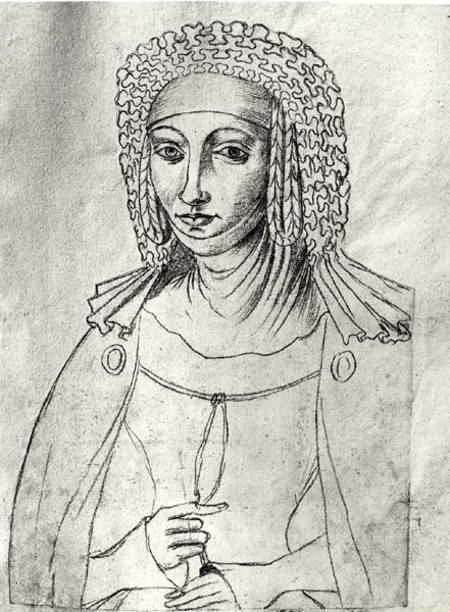Reign 1361–1382 Father Philip V of France | Successor Louis of Male Predecessor Philip of Rouvres Name Margaret Countess | |
 | ||
Role Countess Palatine of Burgundy Children Louis II, Count of Flanders Parents Joan II, Countess of Burgundy, Philip V of France Grandchildren Margaret III, Countess of Flanders Similar People | ||
Margaret I (1310 – 9 May 1382), Countess Palatine of Burgundy and Artois, reigned from 1361 and 1382. By marriage, she was also countess of Flanders, Nevers and Rethel.
Contents
Early life
Margaret was born in 1310, the second daughter of Countess Joan II of Burgundy and the future King Philip V of France. Her father ascended the throne in 1316, following the death of her infant first cousin King John I. Margaret was married to Louis I, Count of Flanders. Her husband was dependent on her father in suppressing the rebellion of Nicolaas Zannekin. King Philip died in 1322, and the crown was inherited by her uncle, King Charles IV.
Margaret's mother, Joan II, succeeded her own mother, Mahaut, as Countess of Artois in 1329. Margaret's elder sister Joan, inherited the counties of Artois and Burgundy when their mother died in 1330. Her husband was killed in the Battle of Crécy on 26 August 1346. He and Margaret had one son, Louis II, Count of Flanders, who succeeded his father and for whom she acted as a regent in the beginning of his reign. In 1355, the younger Louis claimed the Duchy of Brabant in right of his wife, but Duchess Joanna, managed to keep her possessions.
Personal rule
In 1357, Margaret's granddaughter, Margaret , then seven years old, was married to Philip I, Duke of Burgundy, grandson and heir of Margaret's sister. They were childless and, upon his death in 1361, Margaret inherited Artois and Burgundy.
In 1369, the younger Margaret married Philip the Bold, youngest son of King John. According to Guizot, whilst Margaret I favoured the marriage of her granddaughter to Philip the Bold, the girl's father, Louis of Flanders, and the Flemish communes, preferring England to France, were unwilling to arrange the marriage. Reputedly, Margaret, vexed at the ill will of the count her son, had one day said to him, as she tore open her dress before his eyes, "Since you will not yield to your mother's wishes, I will cut off these breasts which gave suck to you, to you and to no other, and will throw them to the dogs to devour." Louis, persuaded, agreed to the marriage.[1]
The unrest in coastal Low Countries escalated to open rebellions in Margaret's last years. A revolt in Ghent was put down by joint operation of Margaret's son and grandson-in-law. However, after the Battle of Beverhoutsveld, Louis II was expelled from Flanders by the Flemings under Philip van Artevelde. A French army (and Philip the Bold) came to help them regain Flanders, and the revolting Flemings were decisively defeated at the Battle of Roosebeke, the year in which Margaret died. However, the citizens of Ghent continued to resist with English aid, and it was left to her granddaughter and grandson-in-law to subdue the town.
Countess Margaret died in 1382. Her counties were inherited by her only son Louis, Count of Flanders, who died two years later. In 1384, all her possessions, together with Flanders and the rest of Louis' inheritance, went to her only surviving grandchild, Margaret III and II.
